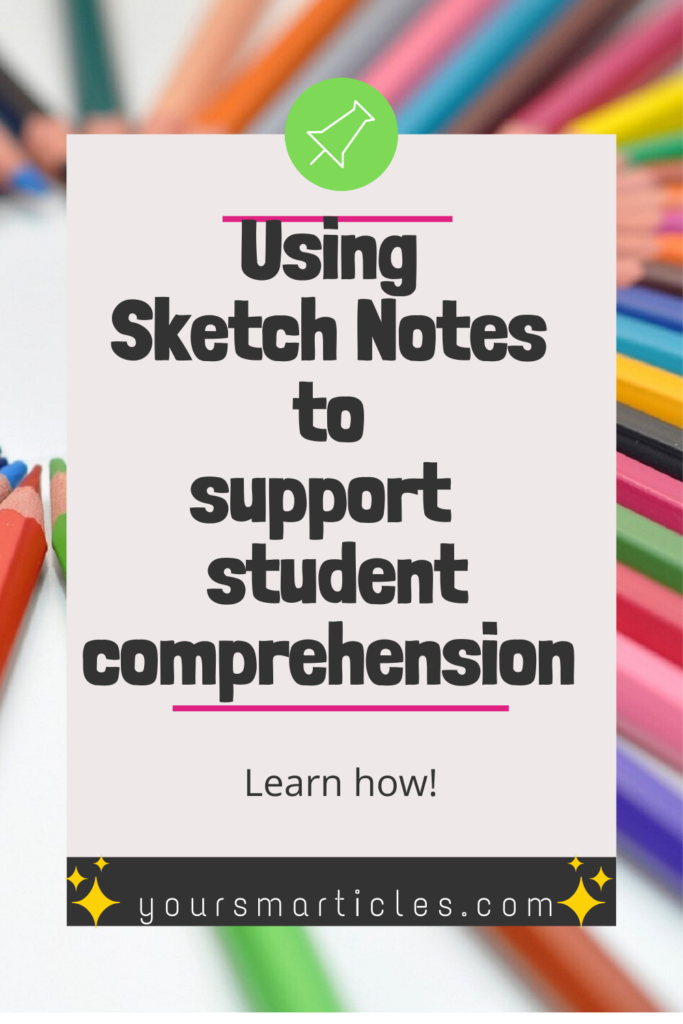
Using Sketch Notes in a Middle School Classroom
Sketch Notes (AKA Visual Note Taking) are essentially a note taking strategy that allows students to creatively express their interpretation of readings, lectures or ANY classroom content. Sketch Notes allow students to actively listen and keep their brains (and hands) occupied while listening to fiction AND non-fiction text. Best of all, Students LOVE It!!
Sketch Notes are purposeful doodling while listening to something interesting. Sketchnotes don’t require a high level of drawing skills, but they help students make connections to text, visualize and summarize their listening experience.
Sketch Notes are a note taking strategy AND form of creative expression.
Sketch Note Taking Tips
Sketch Notes (AKA Visual Note Taking) are essentially a note taking strategy that allows students to creatively express their interpretation of readings, lectures or ANY classroom content. Sketchnotes allow students to actively listen and keep their brains (and hands) occupied while listening to fiction AND non-fiction text. Best of all, Students LOVE Them!!
How To Get Started
Step #1. Distribute PLAIN paper. Allow students to sketch in pen OR pencil. Whatever writing utensil they’re MOST comfortable with.
Step #2. Arm them with suggestions…teach them something NEW! I started by showing them the basics of bullets, banners and creating shadows.
Step #3. Read or introduce content to students!! Occasionally pause during the reading to point out an interesting image that you’d like to draw (but you can’t because you’re reading!) That will undoubtedly inspire students to try to create the image themselves. After a few chapters, students can take turns reading and sharing their notes with a partner after reading…this is a GREAT way to solidify understanding and review of story events.
Step #4. Provide a list of difficult to spell character names, setting(s), etc. Students are listening, they aren’t looking at the words so they’ll need access to the spellings of names to add to their notes.
Step #5. Comment on the author’s craft as you read. Point out personification, allusions, vivid descriptions, characterization and other features of the writing and follow up with mini-lessons to support student understanding.
Step #6. Celebrate student work! Take pictures, share, host gallery walks. Find that something special in EVERY student’s work.
Visual note taking (Sketchnotes) will make students take note (literally), and you’ll be
✨Using Your Smarticles✨



